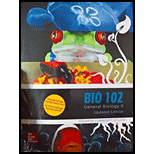
Introduction:
The sensory adaptation is the process in which the sensitivity towards the continuous signals gets reduced. This results in the less sensitivity of the receptors towards the signals. This process occurs for all the senses like hearing, taste, touch except the vision because vision is important for the humans.
Answer to Problem 1MCQ
Correct answer:
During sensory adaptation, the sensation of a stimulus decreases, the perception of stimulus decreases and sensory receptors respond to a stimulus with fewer action potential. Therefore, option d is correct.
Explanation of Solution
Reasons for the correct statements:
The sensory adaptation is a process in which sensory receptors get desensitized by the prolonged exposure of a stimulus. These results in the fewer generation of an action potential and fewer impulses are sending to the brain, due to which the perception of a stimulus gets decreases. Hence, a sensory adaptation of sensory receptor desensitized which result in the sensation of a stimulus decreases, the perception of stimulus decreases and sensory receptors respond to a stimulus with fewer action potential.
Hence, option d is correct.
Reasons for the incorrect statements:
Option (a) is given as “The sensation of a stimulus decreases”.
Due to sensory adaptation, the sensation of stimulus get decreased is the correct option. But the options like the perception of stimulus decreases and sensory receptors respond to a stimulus with fewer action potentials are also correct. Hence, it is a wrong answer.
Option (b) is given as “The perception of stimulus decreases”.
Due to sensory adaptation, the perception of stimulus gets decreased is the correct option. But the options like the sensation of stimulus decreases and sensory receptors respond to a stimulus with fewer action potentials are also correct. Hence, it is a wrong answer.
Option (c) is given as “Sensory receptors respond to a stimulus with fewer action potentials”.
Due to sensory adaptation, Sensory receptors respond to a stimulus with fewer action potentials is the correct option. But the options like the sensation of stimulus decreases and perception of stimulus decreases are also correct. Hence, it is a wrong answer.
Hence, options (a), (b), and (c) are incorrect.
The sensory adaptation decreases the sensation of stimulus, the perception of the stimulus, and receptor responds toward stimulus by generating fewer action potentials.
Want to see more full solutions like this?
Chapter 27 Solutions
BIO 102 General Biology II Updated Edition (Tidewater Community College)
- students in a science class investiged the conditions under which corn seeds would germinate most successfully. BAsed on the results which of these factors appears most important for successful corn seed germination.arrow_forwardI want to write the given physician orders in the kardex formarrow_forwardAmino Acid Coclow TABle 3' Gly Phe Leu (G) (F) (L) 3- Val (V) Arg (R) Ser (S) Ala (A) Lys (K) CAG G Glu Asp (E) (D) Ser (S) CCCAGUCAGUCAGUCAG 0204 C U A G C Asn (N) G 4 A AGU C GU (5) AC C UGA A G5 C CUGACUGACUGACUGAC Thr (T) Met (M) lle £€ (1) U 4 G Tyr Σε (Y) U Cys (C) C A G Trp (W) 3' U C A Leu בוט His Pro (P) ££ (H) Gin (Q) Arg 흐름 (R) (L) Start Stop 8. Transcription and Translation Practice: (Video 10-1 and 10-2) A. Below is the sense strand of a DNA gene. Using the sense strand, create the antisense DNA strand and label the 5' and 3' ends. B. Use the antisense strand that you create in part A as a template to create the mRNA transcript of the gene and label the 5' and 3' ends. C. Translate the mRNA you produced in part B into the polypeptide sequence making sure to follow all the rules of translation. 5'-AGCATGACTAATAGTTGTTGAGCTGTC-3' (sense strand) 4arrow_forward
- What is the structure and function of Eukaryotic cells, including their organelles? How are Eukaryotic cells different than Prokaryotic cells, in terms of evolution which form of the cell might have came first? How do Eukaryotic cells become malignant (cancerous)?arrow_forwardWhat are the roles of DNA and proteins inside of the cell? What are the building blocks or molecular components of the DNA and proteins? How are proteins produced within the cell? What connection is there between DNA, proteins, and the cell cycle? What is the relationship between DNA, proteins, and Cancer?arrow_forwardWhy cells go through various types of cell division and how eukaryotic cells control cell growth through the cell cycle control system?arrow_forward
 Human Anatomy & Physiology (11th Edition)BiologyISBN:9780134580999Author:Elaine N. Marieb, Katja N. HoehnPublisher:PEARSON
Human Anatomy & Physiology (11th Edition)BiologyISBN:9780134580999Author:Elaine N. Marieb, Katja N. HoehnPublisher:PEARSON Biology 2eBiologyISBN:9781947172517Author:Matthew Douglas, Jung Choi, Mary Ann ClarkPublisher:OpenStax
Biology 2eBiologyISBN:9781947172517Author:Matthew Douglas, Jung Choi, Mary Ann ClarkPublisher:OpenStax Anatomy & PhysiologyBiologyISBN:9781259398629Author:McKinley, Michael P., O'loughlin, Valerie Dean, Bidle, Theresa StouterPublisher:Mcgraw Hill Education,
Anatomy & PhysiologyBiologyISBN:9781259398629Author:McKinley, Michael P., O'loughlin, Valerie Dean, Bidle, Theresa StouterPublisher:Mcgraw Hill Education, Molecular Biology of the Cell (Sixth Edition)BiologyISBN:9780815344322Author:Bruce Alberts, Alexander D. Johnson, Julian Lewis, David Morgan, Martin Raff, Keith Roberts, Peter WalterPublisher:W. W. Norton & Company
Molecular Biology of the Cell (Sixth Edition)BiologyISBN:9780815344322Author:Bruce Alberts, Alexander D. Johnson, Julian Lewis, David Morgan, Martin Raff, Keith Roberts, Peter WalterPublisher:W. W. Norton & Company Laboratory Manual For Human Anatomy & PhysiologyBiologyISBN:9781260159363Author:Martin, Terry R., Prentice-craver, CynthiaPublisher:McGraw-Hill Publishing Co.
Laboratory Manual For Human Anatomy & PhysiologyBiologyISBN:9781260159363Author:Martin, Terry R., Prentice-craver, CynthiaPublisher:McGraw-Hill Publishing Co. Inquiry Into Life (16th Edition)BiologyISBN:9781260231700Author:Sylvia S. Mader, Michael WindelspechtPublisher:McGraw Hill Education
Inquiry Into Life (16th Edition)BiologyISBN:9781260231700Author:Sylvia S. Mader, Michael WindelspechtPublisher:McGraw Hill Education





